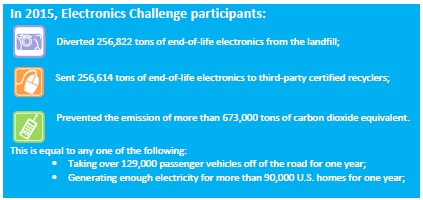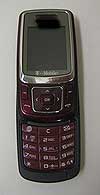Electronics: The Next Frontier in Sustainability
By: Mathy Stanislaus
Last year was quite a year for the Office of Land and Emergency Management. October marked the 40th anniversary of the Resource Conservation and Recovery Act, and we have been taking stock of our success managing our materials and waste, and discussing where we need to head in the future. In addition, we have worked continuously to advance Sustainable Materials Management (SMM) and life cycle thinking. Recent analysis concludes that global raw materials use is accelerating to a point of creating economic risks, along with increasing environmental consequences such as greenhouse gas emissions. As the U.S. Government’s representative to the G7 Alliance on Resource Efficiency, I have championed SMM to make life cycle thinking ubiquitous throughout a product’s supply chain. This includes manufacturing, transportation use, and end of life management to get the most out of the materials we use. A perfect example of SMM in action in the U.S. today is the design and management of electronics.
In 2012, the Sustainable Materials Management Electronics Challenge was launched under the National Strategy for Electronics Stewardship (NSES). The Challenge encourages electronics manufacturers, brand owners and retailers to strive to send 100 percent of the used electronics they collect from the public, businesses and within their own organizations to third-party certified electronics refurbishers and recyclers.
By EPA publically acknowledging their efforts and achievements, we amplify the message of the safe management of electronics across their life cycle and inspire the electronics industry and other sectors with transferrable best practices.
Through source reduction, designing with environmental awareness, responsible recycling, and outreach, our Challenge participants – Best Buy; Dell Inc.; LG Electronics, USA; Samsung Electronics Co.; Sony Electronics, Inc.; Sprint; Staples; and VIZIO, Inc. – have made significant environmental contributions.
Electronic products are a global economic driver, with supply chains reaching around the world. Like so many products on the market, today’s electronics are made from valuable resources and highly engineered materials, like precious metals, plastics, and glass. If not properly managed, some of the materials in our electronics may pose a risk to human health and the environment. By designing with the environment in mind and through a life-cycle lens, toxic materials can be designed out of the product and the product can be made to be more readily repairable and reusable, extending its life and facilitating recycling.
Dell and Samsung have innovated in their industry sectors with this principle in mind. Dell is a 2016 Champion for their use of post-industrial recycled (PIR) carbon filled polycarbonate in a new line of laptops, the first laptop to use this material. By using PIR material, Dell kept 170,000 pounds of carbon fiber from being landfilled in 2015. Samsung is a 2016 Champion for their Cadmium-free Quantum Dot ultra-high definition televisions (HDTV), also an industry first. The resulting TVs are free of cadmium – a hazardous heavy metal – and use less materials and energy than other HDTVs, with properties that allow for better light efficiency and improved durability. This allows the display to be kept at peak quality for years, delaying end-of-life management decisions.
Since the Challenge was launched, our participants collectively have sent nearly 950,000 tons of electronics to certified recyclers, which is equivalent to powering over 334,072 homes with electricity for one year or diverting over 717,900 tons of waste from landfills! Staples is a 2016 Champion for their innovative outreach and public education initiative, which reached over 6 million consumers with information on their Technology Recycling Program. Through their efforts, Staples attained a significant increase in the tons collected per store from 2014 to 2015 and then ensured that 100% of the e-waste collected from consumers was sent to a certified recycler.
The SMM Electronics Challenge is about much more than electronics recycling. In addition to rewarding significant recycling efforts, we also give out the Champion Awards, which honor our participants for using life cycle thinking in designing their products and promoting this thinking through outreach programs aimed at consumers. The products and programs recognized by these awards are real-world examples of SMM in action. You can learn more about previous and our current champion award winners here.
I am exceptionally proud of the successes the Electronics Challenge participants this year and the hard work of my staff for keeping the momentum going. In addition to recognizing the great work of our Challenge participants it’s also important that we use this moment to encourage other businesses in their sustainability programs to model the substantial commitment and deliver the same outstanding results that our Challenge participants have produced. Some might even want to step up and join our Electronics Challenge program; we would welcome your participation.
To honor the achievements of our participants and broaden our message to the electronics community, I am thrilled that we are partnering with the Consumer Technology Association (CTA) for the awards ceremony. The ceremony will be held on January 7, 2017, on the Consumer Technology Association (CTA) stage at the 2017 Consumer Electronics Show (CES) in Las Vegas, NV. CTA and EPA will also be co-hosting a panel discussion where we will have a robust dialogue with our stakeholders and participants. The actions of today influence our tomorrow, so let me once again congratulate our 2016 Electronics Challenge participants!






 By Lucy Casella
By Lucy Casella